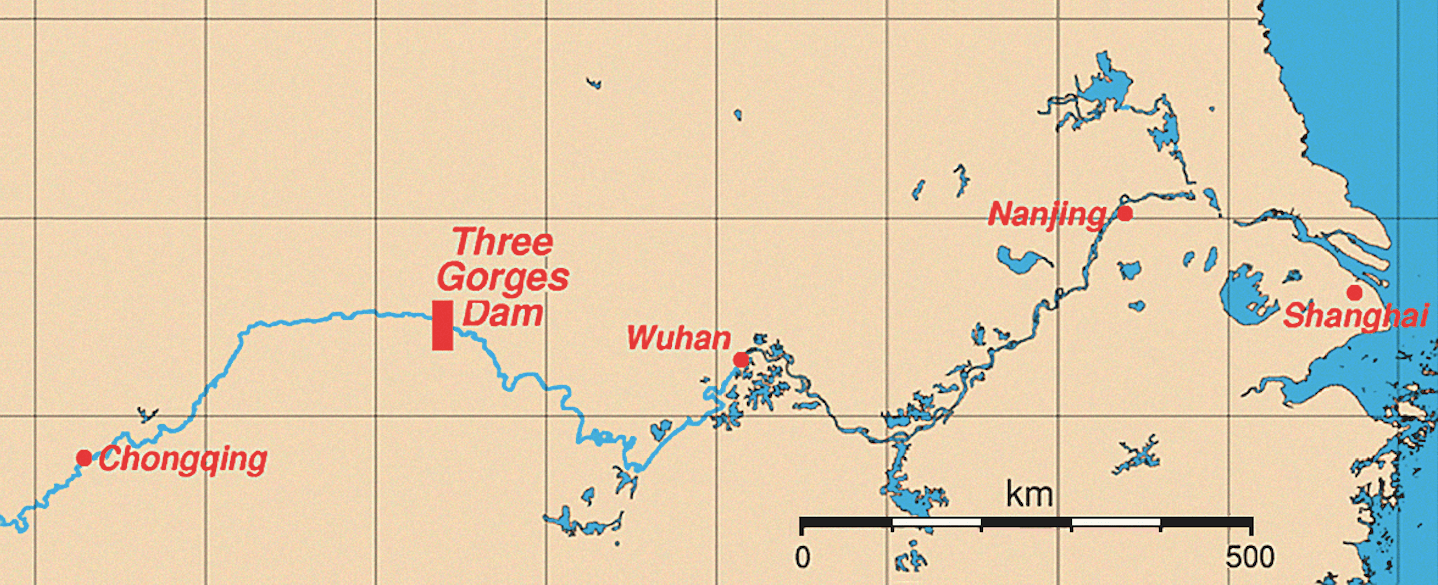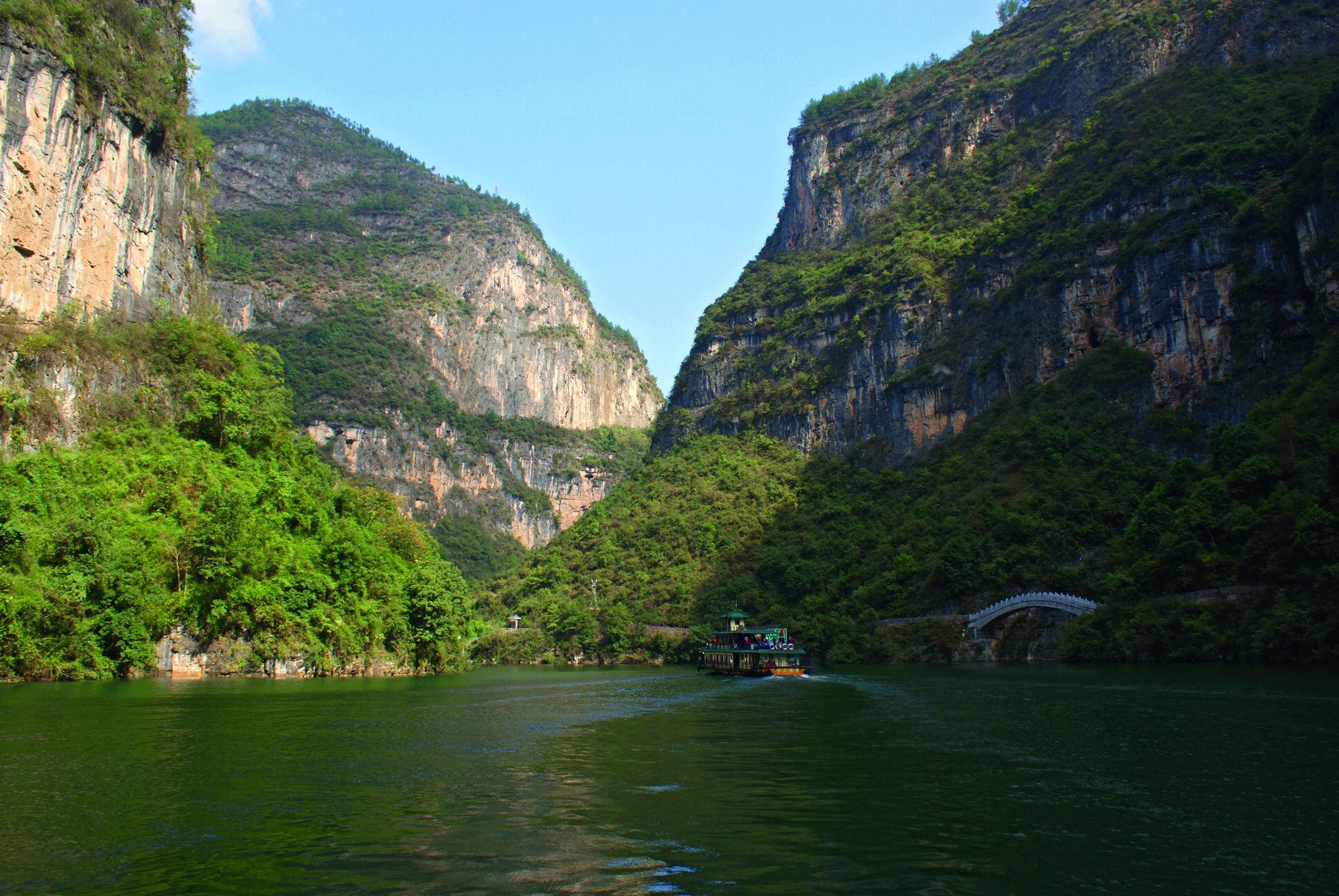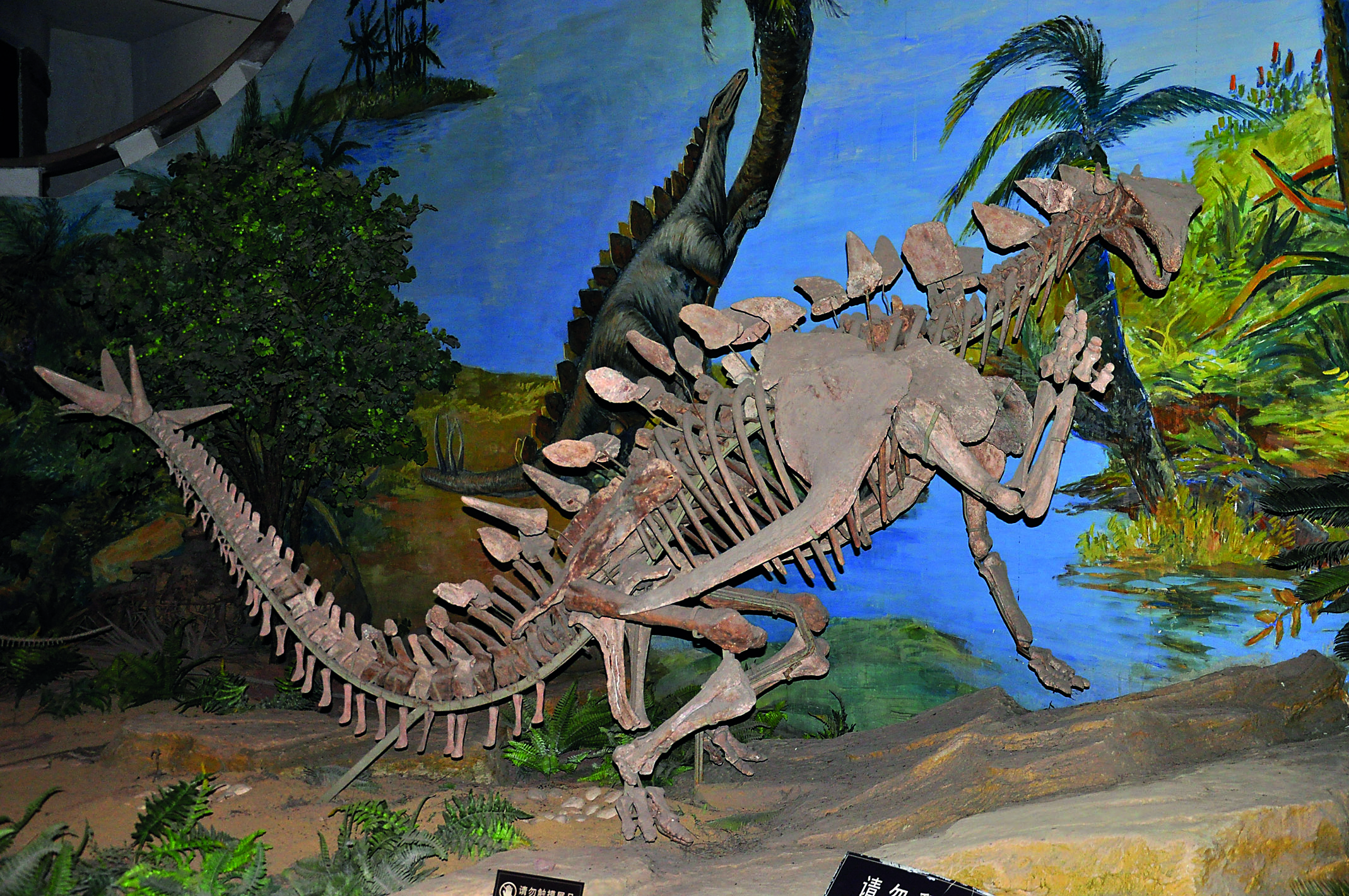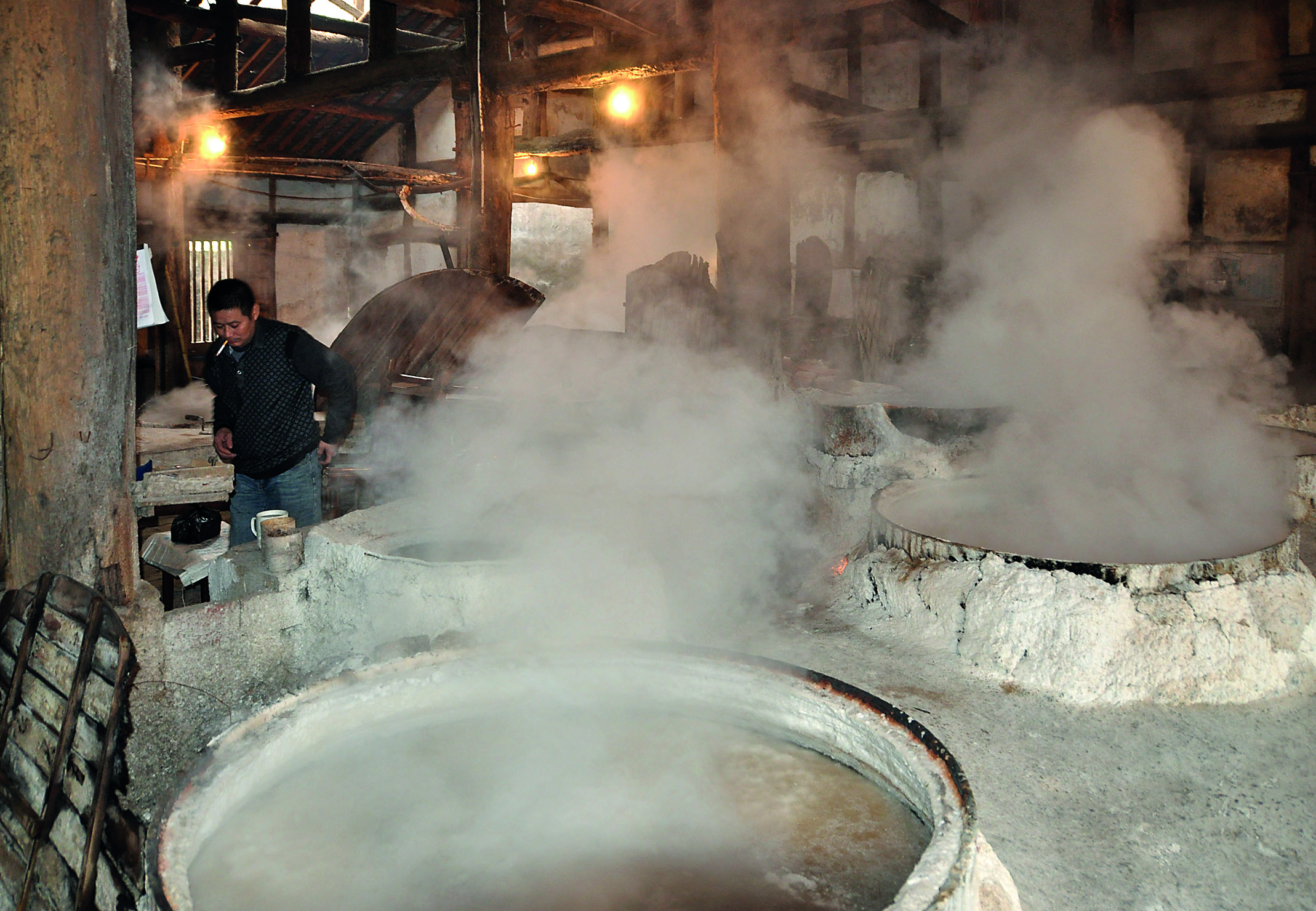Approaching Chóngqìng Airport from the air, you fly in over the valley alongside the city for what feels like forever. The whole place appears to be balancing on several mountains, and the forest of skyscrapers stretches into infinity. How big can this city be? It turns out that ‘only’ around 11 million people apparently live in the city, whereas the county of Chóngqìng has about 30 million inhabitants. So a small city – by Chinese standards. It is the fact that the city is built on several mountains that makes it seem really large and chaotic to a first-time visitor.
When we visit, it is the middle of November, and the city is covered in cloud. The winter months here are wet and cold, and Chóngqìng is wrapped in a fog that rarely lifts before springtime, but the summers are long and hot and humid – and still overcast. Hence the city’s nickname – the Capital of Fog.

The three gorges
The city of Chóngqìng is situated in an area characterised by complex geological features. It lies in the middle of a transition zone between the Tibetan Plateau and the middle and lower reaches of the Yangtze River. The Yangtze, the third longest river in the world, and the Jialing River both run through the city and join forces here.
The earth’s crust has been pushed up, shaping the mountains that the city is built upon, and large amounts of faulting and movement over a long period of time have left the area fragmented and unstable. The surface rock appears stable, but underneath is a much softer layer, and below this is more stable rock, making the Chóngqìng area particularly prone to geological disasters. As a result, the city has been devastated throughout its history by flash floods, mudslides, slumps and collapses in the rainy season.
One of the great tourist attractions in the whole of China is a cruise along the Yangtze and through the Three Gorges, and Chóngqìng is the perfect starting point. These deep canyons, the result of millions of years of erosion by the Yangtze River, start a few kilometres east of the city and level out 200 km further east. The gorges are between 300 and less than 100m wide and the surrounding cliffs rise to a height of over 1,300m, often jutting out over the river. As well as awe-inspiring scenery, there are a number cultural sites along the Gorges, such as Baidicheng (White Emperor City), known as the ‘Poet City’, after the many famous Chinese poets who have lived there. With interesting villages, temples and pagodas built into the rock, a cruise down the Three Gorges is a tranquil respite after the noise and bustle of Chinese cities.

The construction of the world’s most powerful dam, the Three Gorges Dam, which was completed in July 2012, has had a significant effect on the Gorges. Designed to regulate the flooding of the Yangtze and to improve navigation, as well as to provide hydroelectricity, the dam, which is situated about 200 km downstream from Chóngqìng, has raised the water level considerably, reducing the visual impact of the Gorges. It has also drowned a number of archaeological and cultural sites, although some of them were excavated and moved before inundation. It is estimated that more than a million people have been relocated and over a hundred towns and villages submerged by the construction of the dam, which has created a 600 km long lake. There has also been significant environmental damage, with the endangerment and extinction of many plant and animal species.
On the dinosaur trail
If you drive a few hours west of Chóngqìng into the famous province of Sìchuãn, just across the border you will find the smaller city of Zigong, which is located in the Sìchuãn Basin. This area has a rich geological history, and is a part of the Global Geopark Network, which is under the UNESCO umbrella. Zigong Global Geopark consists of the dinosaur area, the well salt industry area, and the Qinglongshan area.

In 1972, a Chinese gas company working in the area stumbled upon Gasosaurus, which proved to be the first dinosaur of many to be found in the area. The dinosurs are found in the middle to late Jurassic Dashanpu Formation. This consists of four main horizons: the upper and lower Shaximiao Formations, which are the most productive regarding dinosaur fossils, and the Zhenchuchong and Ziliujing Formations, which remain relatively unexplored. Today, over 8,000 dinosaur fossils have been excavated from the Dashanpu Formation, predominantly sauropods, theropods and stegosaurians, making it one of the largest dinosaur fossil sites in the world.
In the Jurassic, the Dashanpu forest resembled nothing like the dinosaur quarry we see today. The area was covered in lush forest, and a large river probably fed a large lake. Over millions of years, dinosaur remains was swept down the river and into the lake, explaining the large number of specimens found in this area.
White gold
For more than 2,000 years, predating the Han Dynasty (76–88 AD), salt has been produced in the Zigong area, making Sìchuãn a wealthy province. The brine in the aquifers in the Zigong area has a salinity of over 50 grams per litre. To begin with, large pits were dug to extract the salt, but even before the Song Dynasty (960–1279) the locals were digging wells straight down into the earth with sophisticated drilling tools made of iron and bamboo. Once the well was completed, men (later replaced by buffalo) brought the brine to the surface, where it was transferred to the cooking units and evaporated, leaving pure salt behind. A by-product of the drilling process was natural gas, and with time, the Chinese developed tools to contain and utilise the gas in salt production, replacing wood as a heat source.
Over 400 years before the Europeans thought of it, the salt-producers of Zigong had invented the deep percussion drilling technique. This technique was refined over the years, and between the Ming and Qing Dynasties, in 1835, the salt-producing region of Zigong reached another milestone, drilling a well that was over 1,000m deep.
Due to the high salinity of the brine in the Zigong area, and the depth of the wells, Zigong became a commercial centre in the Sìchuãn province. In 1736, the Xiqing Guildhall was built as a meeting place for salt merchants, with rooms for travelling businessmen, which opened onto a large courtyard where a stage was built, and the merchants were entertained at night, after long days of work and negotiations. Today the building houses the Salt History Museum, and contains an impressive amount of artifacts from the entire history of salt production in the Zigong area.
Nowadays, only four drilling rigs remain to be seen in Zigong, but the museum is working hard to protect and preserve them. Three of them are located in between large apartment-blocks in the city. This area is now also being developed into a museum, and in a few years it will be opening its doors to the public. If you want to experience one of the old salt-producing wells of Zigong, Shenhai well is the only one that is still in operation. Here, brine water is still being pumped up in the traditional way. The well produces about 4 tons of salt per day, and the men boil the water out of the brine on old cookers.

If you are still hungry for some geotourism, the Changshan Range right outside Zigong city hosts two magnificent specimens of silicified wood. They were discovered in 1983 and are primitive conifers named Araucarioxylon. The larger specimen is 23.3m long with a diameter of 1.3m. The trees indicate that when they were growing, the climate in Zigong was subtropical or warm temperate, with few variations, copious amounts of rain and shorter periods of cold, dry season every year. This made for a suitable climate for plant growth.
Zigong city
Zigong is a very small city by Chinese standards, with less than three million inhabitants. The Fuxi river, a tributary to the Yangtze, flows through the city, and like Chóngqìng, Zigong is very humid and plagued by fog. The ground the city is built on used to be a vast, inland sea, now the source of the riches of the region: salt, brine, coal and natural gas. Today these resources are still an important part of the Zigong economy.
The city is also the original home to the Lantern Festival in China, and is known as the Lantern Town. The festival originated back in the Tang Dynasty (618–907), and grows in size every year. Today the festival has been copied from Beijing to Hong Kong, but if you want to experience the real thing, Zigong is still the place to get an authentic experience.






